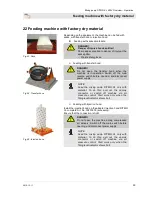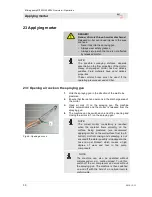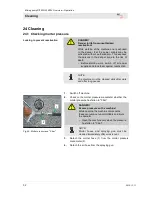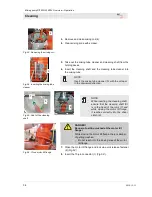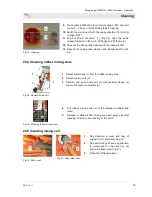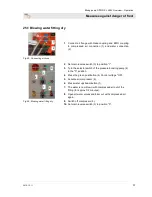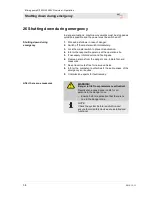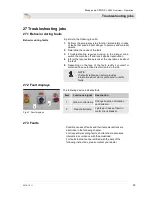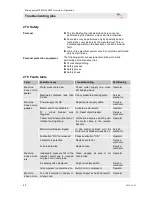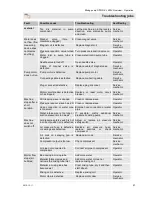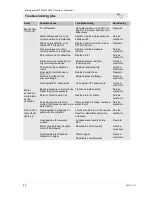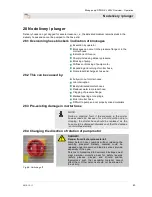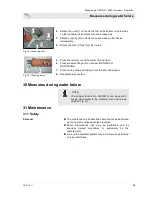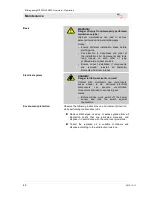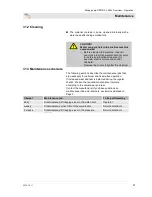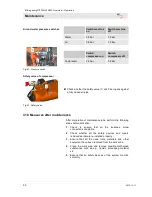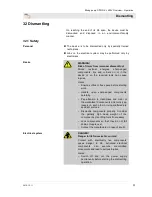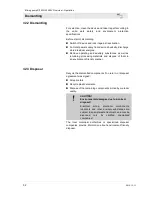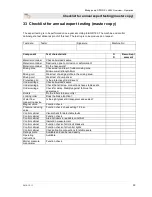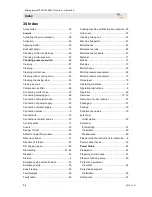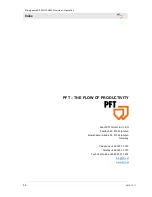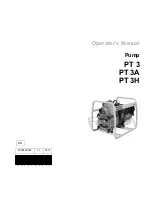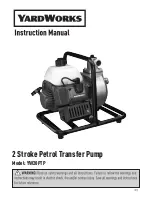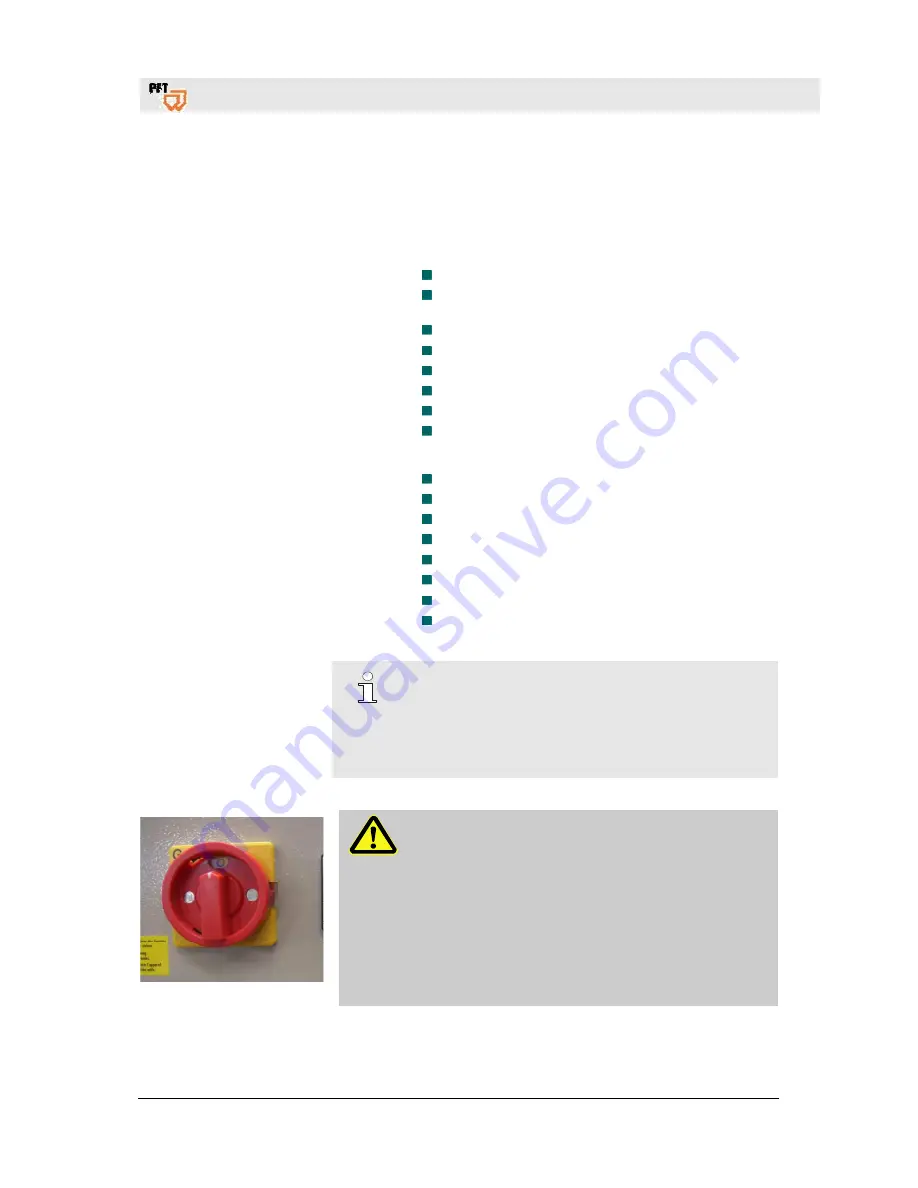
Mixing pump RITMO XL 400V Overview – Operation
No delivery / plunger
2019-12-11
43
28 No delivery / plunger
Delivery hoses can get clogged for several reasons, i.e., the delivered medium remains stuck in the
delivery hoses and cannot be pumped to the hose end.
28.1 Overcoming hose blockers / indication of blockages
Execution by operator:
Blockages can occur in the pressure flange or in the
mortar hoses.
Indications of this are:
Sharply increasing delivery pressure,
Blocking of pump,
Stiffness or blocking of pump motor,
Expanding and turning of mortar hose,
No material discharge at hose end.
28.2 This can be caused by:
Fully worn out mortar hoses,
Job interruption
Badly lubricated mortar hoses,
Residual water in material hose,
Clogging of pressure flange,
Marked tapering at couplings,
Kink in mortar hose,
Difficult to pump and not properly mixed materials.
28.3 Pre-existing damage in mortar hose
NOTE:
During a machine fault, if the pressure in the mortar
hose exceeds 60 bar even for a short duration due to
clogging, the mortar hose should be replaced, as the
hose could be damaged internally such that the damage
is not visible externally.
28.4 Changing the direction of rotation of pump motor
Fig. 68: Switching off
DANGER!
Danger from discharging material!
Never detach hose couplings without releasing the
pumping pressure! Delivery material could be
released under pressure and lead to serious injuries,
especially of the eyes.
Persons commissioned to overcome blockages must
wear personal protective gear for safety reasons
(safety glasses, gloves), and should position
themselves such that escaping material cannot
affect them. Other persons should not be allowed in
the vicinity.

